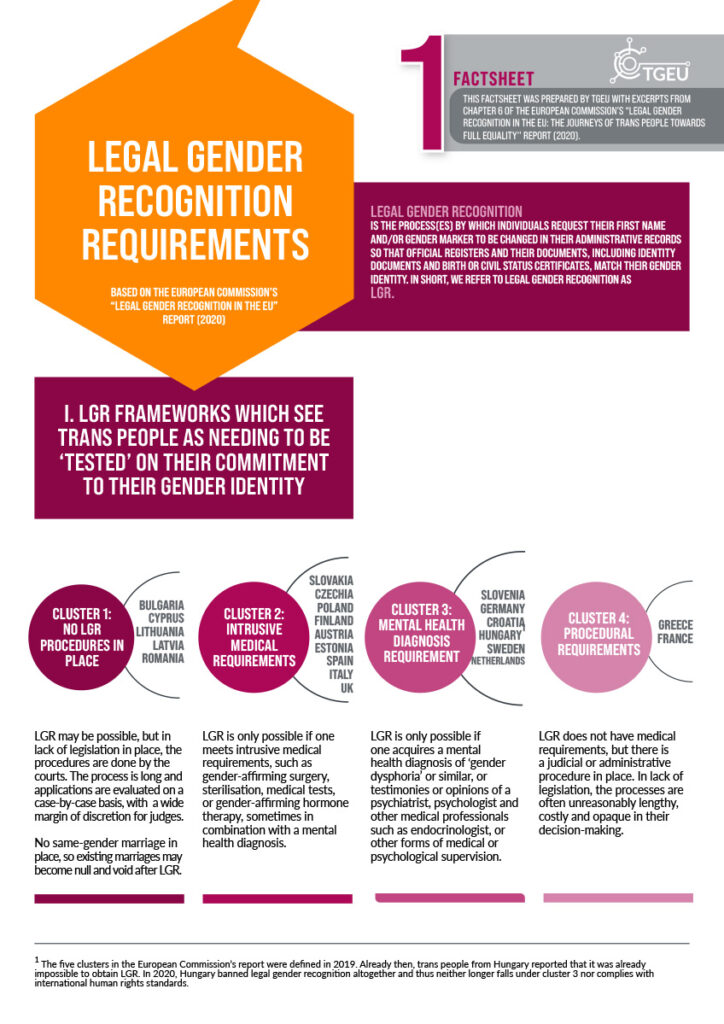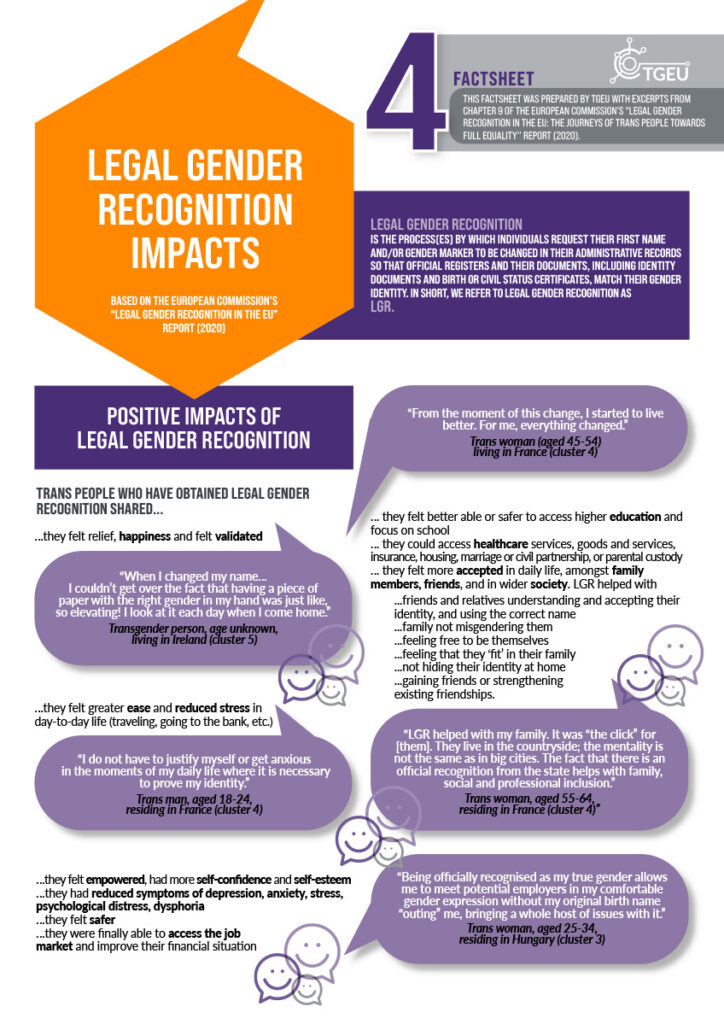New Factsheets on Legal Gender Recognition in the EU
TGEU presents five factsheets on Legal Gender Recognition in the European Union.
The factsheets highlight key findings from a study commissioned by the EU Commission on the lived experiences of trans people and legal gender recognition procedures in the EU. The resource will hopefully make this information more accessible to trans activists and allies as well as support advocates’ work in increasing access to Legal Gender Recognition in the Member States.
Many trans people living in the EU today experience direct and indirect discrimination based on their gender identity. This discrimination exists in the labour market, in access to health and social services, in schools and universities (FRA, 2014; FRA, 2019). It prevents the full and equal social and economic participation of trans people and impedes them from enjoying full rights. In addition, trans people may face day-to-day transphobia, harassment, and abuse. The gender identity of trans individuals is not always reflected in their legal and administrative documents, nor respected by the wider public.
The EU study explores the position and experiences of trans people with regard to a) education, employment, and later life; b) experiences of coming out; c) interactions with and impact of Legal Gender Recognition (LGR) procedures; d) impact of discrimination that trans individuals can face throughout their lifetime.
Most notably, the study identifies patterns among EU Member States that have similar LGR procedures and puts member States in ‘legal clusters,’ making comparison easier.
We hope that these factsheets will be used as a resource by local and national organisations and inspire further advocacy strategies.
Factsheet 1: Legal gender recognition requirements
- Overview on countries with barriers to Legal Gender Recognition
- Overview on countries with self-determination

Factsheet 2: Experiences of going through a Legal Gender Recognition Procedure
- Medical Requirements
- Administrative and Civil Requirements
- Costs

Factsheet 3: Motivations and Reasons for (not) Using LGR Procedures
- Why trans persons use legal gender recognition procedures
- Reasons blocking trans persons from using legal gender recognition

Factsheet 4: Legal Gender Recognition Impacts
- Benefits legal gender recognition has
- Negative impacts faulty legal gender recognition procedures can have
- Negative impacts of no legal gender recognition

Factsheet 5: Accessibility, Clarity and Speed of LGR Procedures
This factsheet covers how accessible, transparent, and quick legal gender recognition procedures are in different groups of countries.
Clusters:
- No legal gender recognition procedures in place
- Intrusive medical requirements
- Mental health diagnosis requirement
- Procedural requirements
- Self-determination
